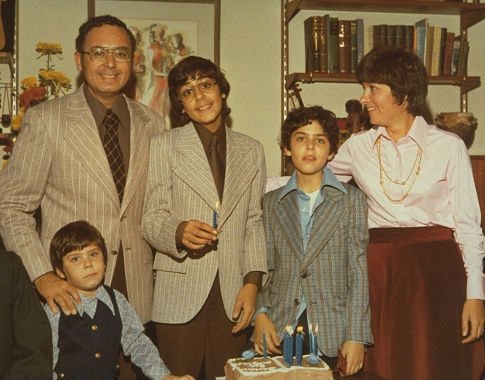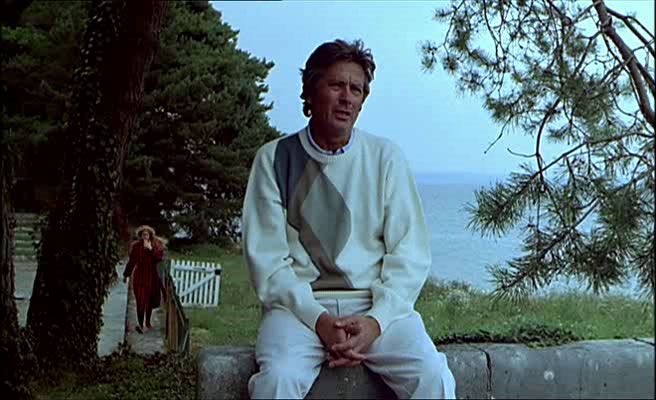Published with the screenplay by Santa Teresa Press in the fall of 1987, and reprinted in my 2007 collection Discovering Orson Welles (along with the introductory paragraphs that follow, tweaked and abridged somewhat). The photograph of Welles’s typewriter reproduced below was taken by Kodar’s nephew, Aleksander (“Sasha”), and Oja herself can be seen lurking indistinctly in a corner. (What I presume is one of her sculptures, on the desk, is more visible.)
When I presented [a] Welles tribute at the Santa Barbara film festival in 1986,
one person in the audience who introduced himself to me afterwards was James
Pepper, a local rare book dealer who, in response to my assertion that the Welles screenplay for The Big Brass Ring should be published, expressed some interest in bringing out a limited edition of 1,000 copies. Having already brought out a handsome volume devoted to Robert Towne’s original screenplay for Chinatown in a similar way, he seemed to know what he was talking about, and I conveyed his proposal to Oja Kodar [whom I had recently met at the Rotterdam Film Festival].
The following year, around the time I was preparing to make a permanent move to Chicago to write for the Chicago Reader, the book appeared. Read more
From the Chicago Reader (June 13, 2003). — J.R.

Capturing the Friedmans
**** (Masterpiece)
Directed by Andrew Jarecki.
It’s disconcerting to be appalled and even slightly nauseated by a masterpiece. But Andrew Jarecki’s Capturing the Friedmans is a documentary, and so it’s disconcerting largely because of its subject matter — it shocks us with the truth.
Yet if Capturing the Friedmans were less shapely and less of a masterpiece, I’d find it less troubling. Both times I’ve seen it I’ve felt that by the end practically everyone associated with the film seems tarnished in one way or another: the ostensible subjects (the Friedmans, an upper-middle-class Jewish family in the Long Island town of Great Neck), the members of their community who helped destroy much of their lives, the filmmakers, and the audience. We’re all tainted by the graphic exposure of family wounds, diminished by what we think and feel — and by what we don’t think and don’t feel. Frankly, I’m not sure whether the film deserves to be applauded or attacked for this.
The film’s story, most of which transpires over a dozen years, begins on Thanksgiving in 1987. Arnold Friedman — a highly respected and popular middle-aged schoolteacher who gives piano and computer lessons at home, and who, as Arnito Rey, led a mambo band in the late 40s and early 50s — is arrested for possessing child pornography and subsequently charged with sexually assaulting dozens of his former computer students. Read more
From the Chicago Reader (November 17, 2006). — J.R.
Alain Delon stars in what may be the last truly great theatrical feature by Jean-Luc Godard to date (1990), though it’s never had a U.S. distributor. It’s also one of his most challenging and difficult films, which helps to explain its scarcity, but it’s also hard to think of many films in Godard’s career that look as beautiful. Filmed in lush Swiss locations that are very close to where Godard grew up, the film is in part a sustained reverie on what it means both to be rich and not to be rich, and the contrapuntal role played here by the wealthy characters and their servants is part of what makes this film so operatic in feeling. In keeping with Godard’s compulsive practice of quoting, every line of dialogue is purportedly traceable to a literary source, with Raymond Chandler and William Faulkner among the many authors utilized. In French with subtitles. 84 min. (JR)
Read more



